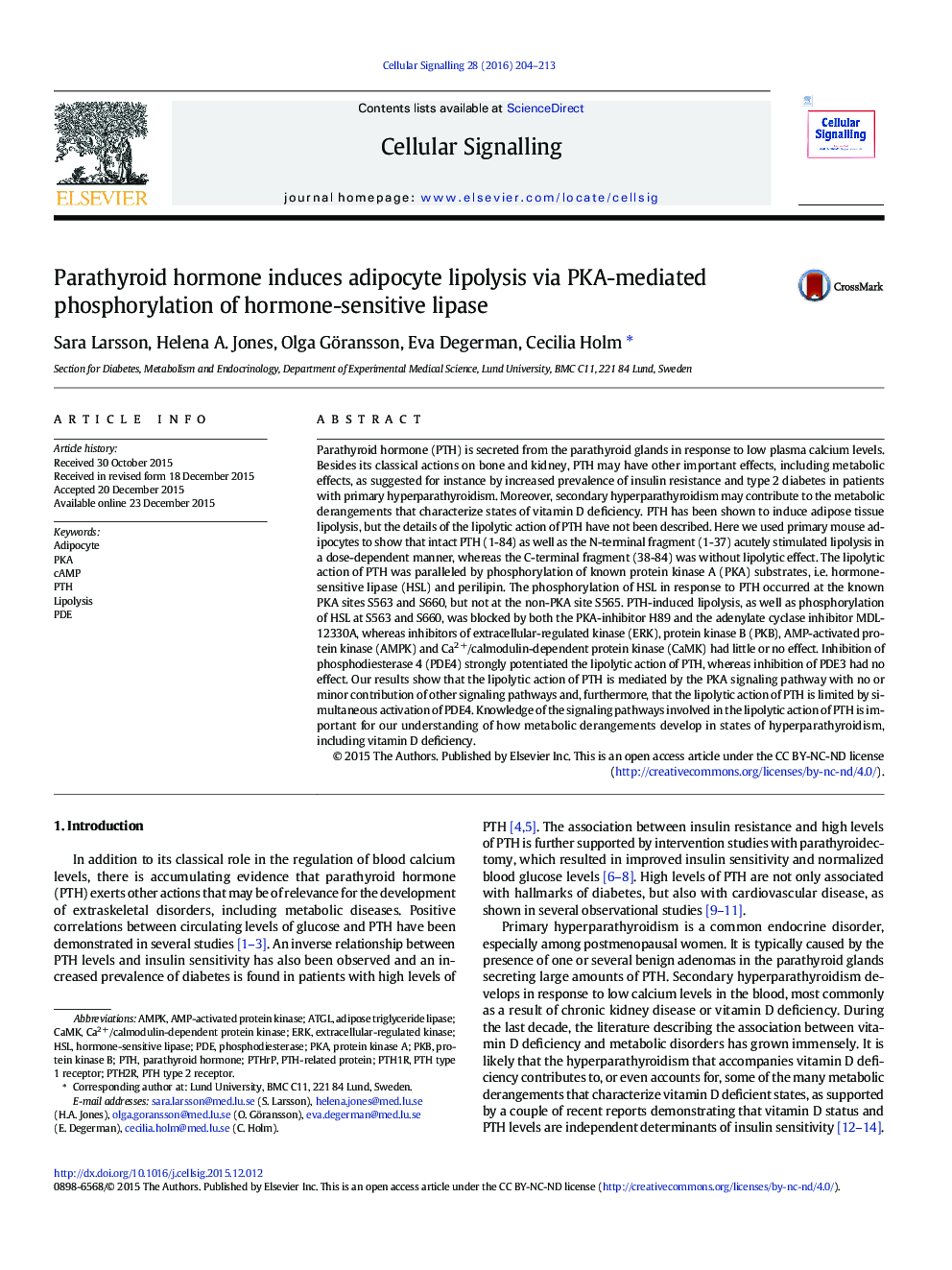| کد مقاله | کد نشریه | سال انتشار | مقاله انگلیسی | نسخه تمام متن |
|---|---|---|---|---|
| 10815230 | 1058461 | 2016 | 10 صفحه PDF | دانلود رایگان |
عنوان انگلیسی مقاله ISI
Parathyroid hormone induces adipocyte lipolysis via PKA-mediated phosphorylation of hormone-sensitive lipase
دانلود مقاله + سفارش ترجمه
دانلود مقاله ISI انگلیسی
رایگان برای ایرانیان
کلمات کلیدی
Ca2 +/calmodulin-dependent protein kinasePTH-related proteinPTH2RPTH1RPTHrPHSLpTHPKBCaMKpKaPDEERKAMPKAMP-activated protein kinase - AMP-پروتئین کیناز فعال شده استcAMP - cAMPAdipocyte - آدیپوسیتAtgl - اتگلPhosphodiesterase - فسفو دی استرازadipose triglyceride lipase - لیپاز تری گلیسیرید چربیhormone-sensitive lipase - لیپاز حساس به هورمونLipolysis - لیپولیزparathyroid hormone - هورمون پاراتیروئیدprotein kinase A - پروتئین کیناز Aprotein kinase B - پروتئین کیناز Bextracellular-regulated kinase - کیناز تنظیم شده خارج سلولی
موضوعات مرتبط
علوم زیستی و بیوفناوری
بیوشیمی، ژنتیک و زیست شناسی مولکولی
زیست شیمی
پیش نمایش صفحه اول مقاله

چکیده انگلیسی
Parathyroid hormone (PTH) is secreted from the parathyroid glands in response to low plasma calcium levels. Besides its classical actions on bone and kidney, PTH may have other important effects, including metabolic effects, as suggested for instance by increased prevalence of insulin resistance and type 2 diabetes in patients with primary hyperparathyroidism. Moreover, secondary hyperparathyroidism may contribute to the metabolic derangements that characterize states of vitamin D deficiency. PTH has been shown to induce adipose tissue lipolysis, but the details of the lipolytic action of PTH have not been described. Here we used primary mouse adipocytes to show that intact PTH (1-84) as well as the N-terminal fragment (1-37) acutely stimulated lipolysis in a dose-dependent manner, whereas the C-terminal fragment (38-84) was without lipolytic effect. The lipolytic action of PTH was paralleled by phosphorylation of known protein kinase A (PKA) substrates, i.e. hormone-sensitive lipase (HSL) and perilipin. The phosphorylation of HSL in response to PTH occurred at the known PKA sites S563 and S660, but not at the non-PKA site S565. PTH-induced lipolysis, as well as phosphorylation of HSL at S563 and S660, was blocked by both the PKA-inhibitor H89 and the adenylate cyclase inhibitor MDL-12330A, whereas inhibitors of extracellular-regulated kinase (ERK), protein kinase B (PKB), AMP-activated protein kinase (AMPK) and Ca2Â +/calmodulin-dependent protein kinase (CaMK) had little or no effect. Inhibition of phosphodiesterase 4 (PDE4) strongly potentiated the lipolytic action of PTH, whereas inhibition of PDE3 had no effect. Our results show that the lipolytic action of PTH is mediated by the PKA signaling pathway with no or minor contribution of other signaling pathways and, furthermore, that the lipolytic action of PTH is limited by simultaneous activation of PDE4. Knowledge of the signaling pathways involved in the lipolytic action of PTH is important for our understanding of how metabolic derangements develop in states of hyperparathyroidism, including vitamin D deficiency.
ناشر
Database: Elsevier - ScienceDirect (ساینس دایرکت)
Journal: Cellular Signalling - Volume 28, Issue 3, March 2016, Pages 204-213
Journal: Cellular Signalling - Volume 28, Issue 3, March 2016, Pages 204-213
نویسندگان
Sara Larsson, Helena A. Jones, Olga Göransson, Eva Degerman, Cecilia Holm,